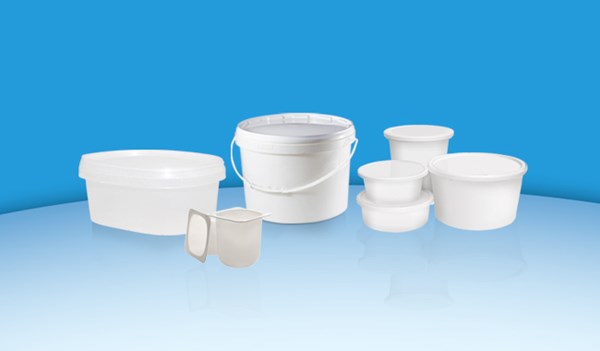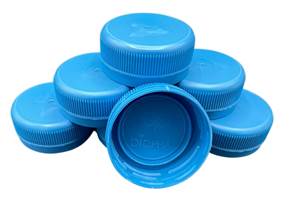The Verdict Is In: Brand Owners Want Recycled PP
The Association of Postconsumer Recyclers surveyed 21 consumer brand companies regarding the potential for PCR PP.
The Association of Postconsumer Recyclers surveyed 21 consumer brand companies regarding the potential for PCR PP.
Recycled PP could become a hot commodity. That’s according to a recent survey from the Association of Postconsumer Recyclers, which stated that demand for recycled polypropylene (PP) by major consumer brand companies is approaching 300 million pounds annually. The 21 major consumer brand companies who responded also provided quality and quantity information for potential PP PCR use in non-food contact applications. These companies alone identified demand of more than 280 million pounds of the recycled resin annually.
The study was an effort to identify market demand for PCR PP in the current market climate. “We recognize the combination of factors impacting the current market for recyclables, however consumer brand companies specifically outlined potential demand for this material. The challenge remains providing recyclers the feedstock to meet that demand,” commented Liz Bedard, APR’s Rigid Plastics Recycling Program Director.
All respondents’ demand is current or within the next three years. The survey also provides information on qualitative PCR components such as melt flow index, odor, color and demand timeframe.
“APR’s two main goals are to increase supply and enhance the quality of the plastics recycling stream,” said J. Scott Saunders, general manager of KW Plastics and chairman of APR. “Through work to achieve those goals, The APR Rigids Plastics Recycling Program and the Polypropylene Market Development Subcommittee have become one of the primary drivers to move the marketplace forward through stimulating growth and increasing availability and use of polypropylene PCR.”
Applications for polypropylene PCR include tubes, rigid packaging, closures, containers, pails, crates, disposable cutlery, pallets, hangers and tubs. Full survey results are available on the APR website.
Julie Zaniewski, packaging sustainability manager at Unilever, participated in the survey and provided her company’s perspective. “Unilever recognizes that recycling is one of the most effective ways to sustain the environment. As part of the Unilever Sustainable Living Plan, we are committed to increasing recycling rates and improving the availability of postconsumer materials, such as polypropylene. Recycled polypropylene is an important material with massive opportunity in a circular economy. Working in partnership with industry, we aim to increase the recycling of polypropylene and increase the recycled material content in our packaging to maximum possible levels, catalyzing the industry and further reducing our impact on the environment.”
The topic of PP PCR has come up quite a bit in some of the various conferences I’ve attended this year (The Recycling Conference, ReFocus).
For instance, during The Recycling Conference, Steve Sikra, materials science and technology manager at Procter & Gamble, said brand owners do indeed want to use recycled PP. Currently, P&G uses about 550,000 tons of virgin PP /yr, but looks to incorporate more recycled PP. By 2020, the company plans to double the use of post-consumer recycled content in plastic packaging.
“Let’s face it, pricing is always a challenge for us, but so is doing the right thing,” he said. “P&G has publically stated these goals and we are going to do that. The drive to use PCR is very real, and specifically in PP, there are a lot of potential applications.”
And while this study focused on potential PP PCR use in non-food contact applications, the food contact applications is also of interest to brands. For instance, I talked extensively with Monique Oxender, Keurig’s chief sustainability officer, regarding the company’s shift to PP. She mentioned the following:
“In terms of recyclability, we also considered what really drives recovery. And we found it’s the value of the material. There has to be a healthy economic equation across the value chain in order for the material to be recovered. When we looked at the outlook for PP, we saw it is very strong, and there are folks that want that material. The demand for post-consumer reclaim PP is on the rise. In fact, demand seems to be outstripping supply.”
Ed. Note: Additive suppliers are taking note as well, witness this product introduction.

Related Content
Calcium Carbonate From Carbon Capture for Brighter Plastics and Greener Steel
CarbonFree is converting steel slag and blast furnace exhaust into an important plastic compounding additive.
Read MorePHA Compound Molded into “World’s First” Biodegradable Bottle Closures
Beyond Plastic and partners have created a certified biodegradable PHA compound that can be injection molded into 38-mm closures in a sub 6-second cycle from a multicavity hot runner tool.
Read MoreDow, Circusil Collaborating on Silicone Recycling Facility
Dow and Circusil announced plans to construct a silicone recycling facility in Kentucky.
Read MoreHow to Optimize Color Evaluation of Recycled Plastics
The right color measurement instrument and good working methods will minimize variability in color evaluation of PCR.
Read MoreRead Next
Beyond Prototypes: 8 Ways the Plastics Industry Is Using 3D Printing
Plastics processors are finding applications for 3D printing around the plant and across the supply chain. Here are 8 examples to look for at NPE2024.
Read MoreLead the Conversation, Change the Conversation
Coverage of single-use plastics can be both misleading and demoralizing. Here are 10 tips for changing the perception of the plastics industry at your company and in your community.
Read More














